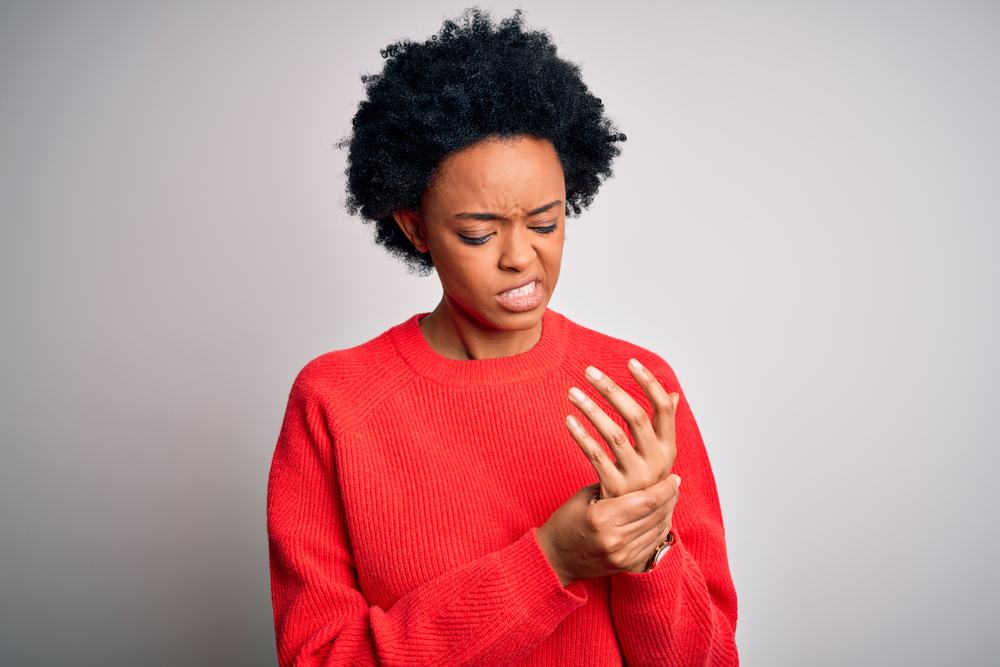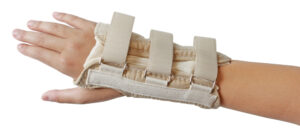De Quervain’s tenosynovitis is a painful condition affecting the tendons on the thumb side of your wrist. It occurs when the tendons around the base of the thumb are irritated or constricted. The word “tendinosis” refers to a swelling of the tendons. Swelling of the tendons and the tendon sheath can cause pain and tenderness along the thumb side of the wrist. If you have de Quervain’s tenosynovitis, it will probably hurt when you turn your wrist, grasp anything or make a fist.
Here is a link to a drawing of the involved tendons.
What causes De Quervain’s tendinosis?
Often, the exact cause is unknown, but it can be triggered by several factors, including:
- Overuse.
- A direct blow to the thumb or thumb side of the wrist.
- Repetitive grasping.
- Inflammatory conditions (including arthritis).
Activities that require a sidewise motion of the wrist while you are gripping with the thumb can aggravate your symptoms. Hobbies and
sports that use this motion include:
- Lifting young children.
- Gardening.
- Racquet sports (tennis, racquetball).
- Skiing.
- Using a hammer.
Who gets de Quervain’s tendinosis?
Risk factors for de Quervain’s tenosynovitis include:
- Age. If you’re between the ages of 30 and 50, you have a higher risk of developing de Quervain’s tenosynovitis.
- Gender. The condition is more common in women.
- Being pregnant. The condition may be associated with pregnancy.
- Baby care. Lifting your child repeatedly involves using your thumbs as leverage and may also be associated with the condition.
- Jobs or hobbies that involve repetitive hand and wrist motions may contribute to de Quervain’s tenosynovitis.
What does de Quervain’s tendinosis feel like?
Symptoms of de Quervain’s tendinosis include:
- Pain near the base of your thumb.
- Swelling near the base of your thumb.
- Difficulty moving your thumb and wrist when you’re doing something that involves grasping or pinching.
- A catching sensation when moving your thumb.
- The pain may spread further into your thumb, up into your forearm or both.
- Pinching, grasping and other movements of your thumb and wrist aggravate the pain.
What can I do to help my de Quervain’s tendinosis?
The goal in treating de Quervain’s tendinosis is to relieve the pain caused by irritation and swelling.
Nonsurgical Treatment
- Splints may be used to rest the thumb and wrist.
- Avoiding repetitive thumb movements as much as possible.
- Avoiding pinching with your thumb when moving your wrist from side to side.
- Your therapist can review how you use your hand and give suggestions on how to make adjustments to reduce stress on your thumb and wrist.
- Anti-inflammatory medication (NSAIDs). These medications can be taken by mouth or injected into a tendon compartment. This may help reduce swelling and relieve pain.
- Ice can be helpful for reducing pain and swelling.
- Your therapist may also recommend exercises to improve thumb and wrist mobility and strength as the symptoms settle.
Surgical Treatment
Surgery may be recommended if symptoms are severe or do not improve. The goal of surgery is to open the thumb compartment (covering) to make more room for the irritated tendons. A physical or occupational therapist may meet with you after surgery to teach you new strengthening exercises and help you adjust your daily routine to prevent future problems.
If you think you have de Quervain’s tendinosis, a hand therapist can help. To book an appointment you can call North 49 at 306.343.7776 or book online at www.north49therapy.com.



